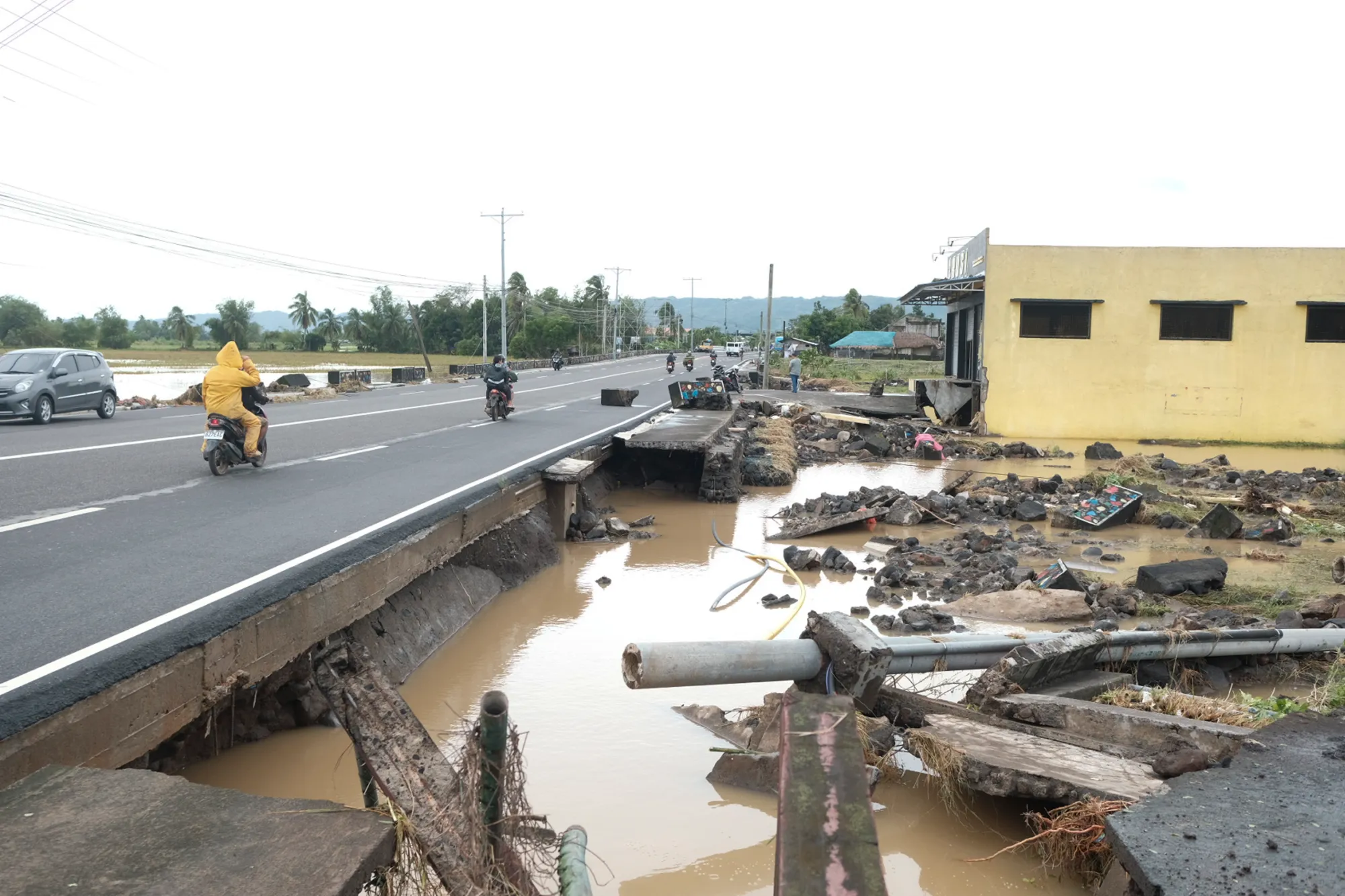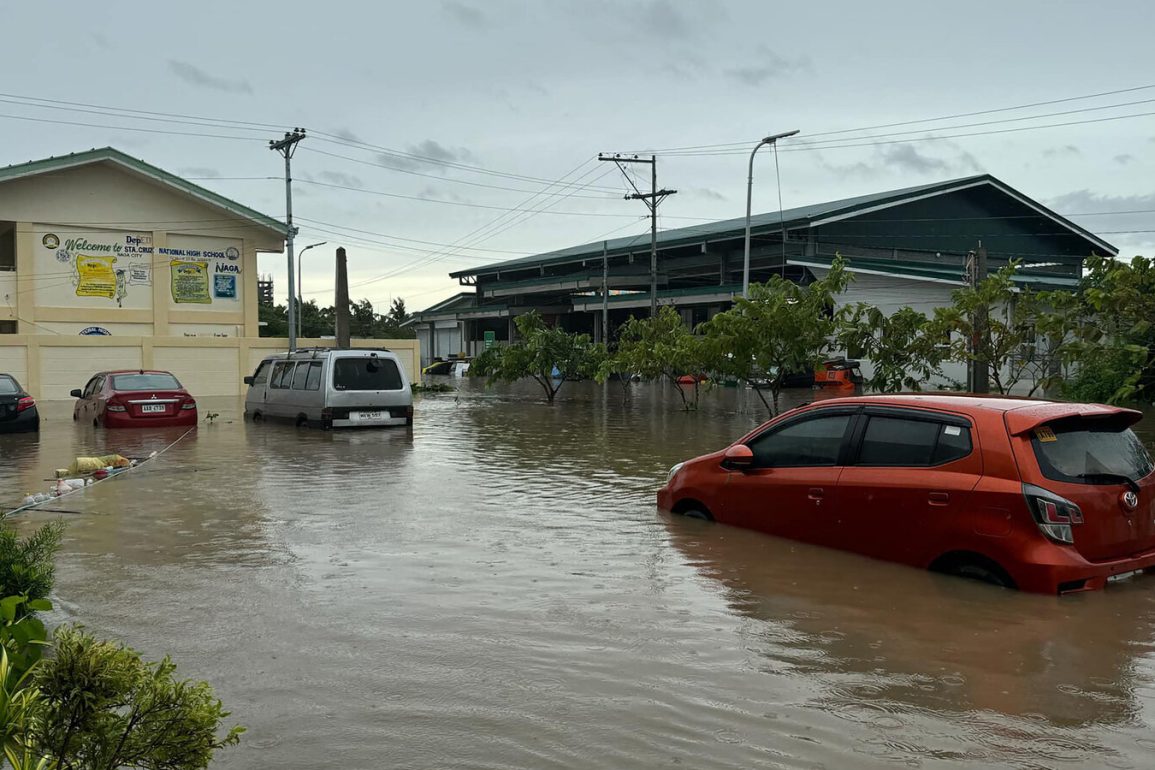Tropical Cyclone Kristine, known internationally as Tropical Storm Trami, caused devastating flooding in the northern Philippines, resulting in over a dozen deaths and several missing persons. More than a million residents were affected, with thousands displaced due to landslides and heavy rainfall.
The storm made landfall after developing near Guam, and its impact was exacerbated by preceding cyclones earlier in the month. The situation became critical as the region was already vulnerable to flash flooding, with government officials issuing warnings ahead of the storm’s arrival.
The storm’s torrential rainfall submerged entire villages, with streets turning into rivers and vehicles being buried under volcanic sediment loosened by the rain. Images and videos from the worst-hit areas showed residents stranded in chest-deep waters, relying on the Coast Guard and rescue teams for evacuation, although rescue efforts were hindered by floodwaters.
Former Vice President Maria Leonor Robredo highlighted the desperate situation, reporting that people had been stuck on rooftops for hours while rescue vehicles struggled to navigate the floodwaters.

The Philippine weather service, PAGASA, predicted daily rainfall exceeding five inches in areas hardest hit by the storm, further worsening the flooding. Although Manila, the capital city, was on the edge of the storm, authorities anticipated heavy rainfall as the cyclone swept across the country.
Despite the cyclone moving westward and away from the Philippines, the ongoing rainy season meant that more rain was likely in the forecast, prolonging the risk of flooding in affected areas.
In the aftermath of the storm, no official damage estimates were immediately available, but disaster officials expected the toll to be significant, with hundreds of communities severely affected by flooding.
The rainy season, which brings an average of 100 inches of rain to Manila, typically stretches into the winter, making it challenging to recover quickly. As the region braced for potential ongoing rainfall, many communities remained vulnerable to further damage.
The 2024 tropical cyclone season has been relatively quiet despite earlier predictions, with only ten cyclones impacting the Philippines so far, compared to the 13-18 cyclones expected. A “La Nada” event, where Pacific Ocean temperatures remain neutral, contributed to reduced cyclone activity globally.
While such neutral conditions do not result in extreme weather patterns like El Niño or La Niña, they still affect local climate patterns, as seen in the Philippines’ continued vulnerability to severe storms.

